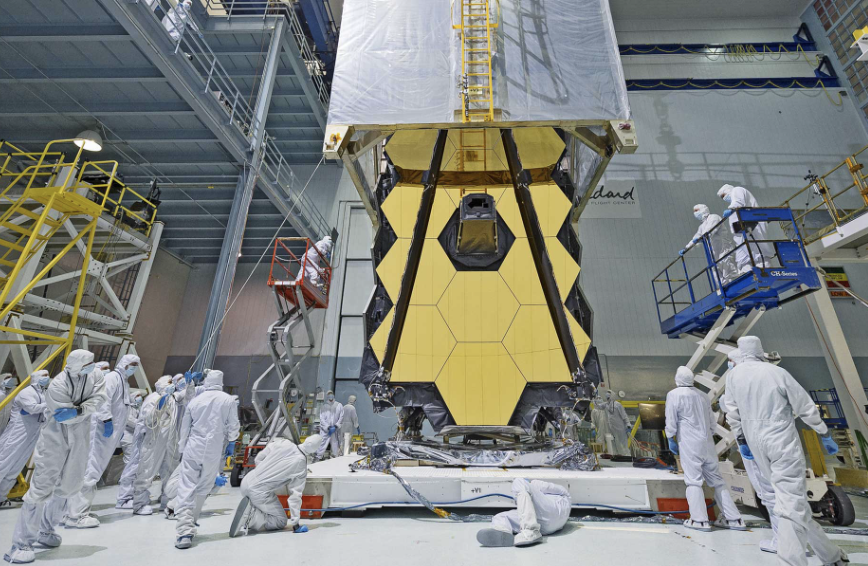Mission
METROLUNAR specializes in developing advanced robotics and cloud-based software for seamless operation and monitoring. By collaborating with NASA, METROLUNAR bridges cutting-edge robotics and autonomy with practical industrial and commercial applications.
The company focuses on modular meta-material design, automated construction, and remote monitoring at a level needed for NASA-level space applications, and brings that level of automation back down to Earth and terrestrial-base building projects.
Construction in Space
Space construction
The James Webb Space Telescope (JWST), a marvel of modern engineering, came with a hefty price tag of $10 billion, far exceeding initial estimates. The telescope required nearly three decades of development, complex assembly on Earth, and meticulous folding into its launch configuration to fit within the constraints of the rocket. This origami-like design was necessary to survive the violent forces of launch and unfold flawlessly in space. While JWST's achievements are groundbreaking, the process was slow, expensive, and inefficient, highlighting the need for a more scalable and cost-effective approach to building future space telescopes.
The next generation of large space telescopes should be constructed in orbit using robotic systems, a vision championed by MetroLunar and rooted in technologies developed at NASA. By assembling telescopes in space, size and weight limitations imposed by launch vehicles can be eliminated, allowing for larger and more advanced designs. Robots could autonomously build modular structures, reducing costs and human risk while enabling quicker deployment. This approach not only offers greater flexibility in design but also opens the door to a new era of scalable, efficient space infrastructure, paving the way for revolutionary advancements in astronomy and space exploration.
Space construction applied to Earth
ITechnologies developed for building in space, such as advanced automation and remote worksite monitoring, can revolutionize construction in remote and challenging locations on Earth. By using automation, modular construction methods, and monitoring tools akin to a NASA mission control center, worksite operations can be managed with precision from a safe distance. These systems enable real-time data collection and analysis, allowing engineers to oversee progress, identify issues, and make informed decisions without being physically present. Such capabilities are invaluable for construction in extreme environments, like deserts, mountains, or arctic sites, where logistics and safety concerns make traditional methods costly and inefficient.
Additionally, automating dangerous tasks reduces the need for human workers to perform hazardous jobs, significantly improving safety. Robotics and automated systems can handle heavy lifting, precision assembly, and operations in unsafe conditions, such as unstable ground or harsh weather. This not only minimizes risk but also ensures consistent quality and reduces reliance on large onsite workforces, which can be difficult to sustain in remote areas. By adapting these space-developed technologies, the construction industry can make projects in difficult locations safer, more efficient, and more sustainable.
Any questions?
If you are part of an organization planning to build the next telescope in space or a project in a remote location on Earth, reach out to us to discuss how we can help


